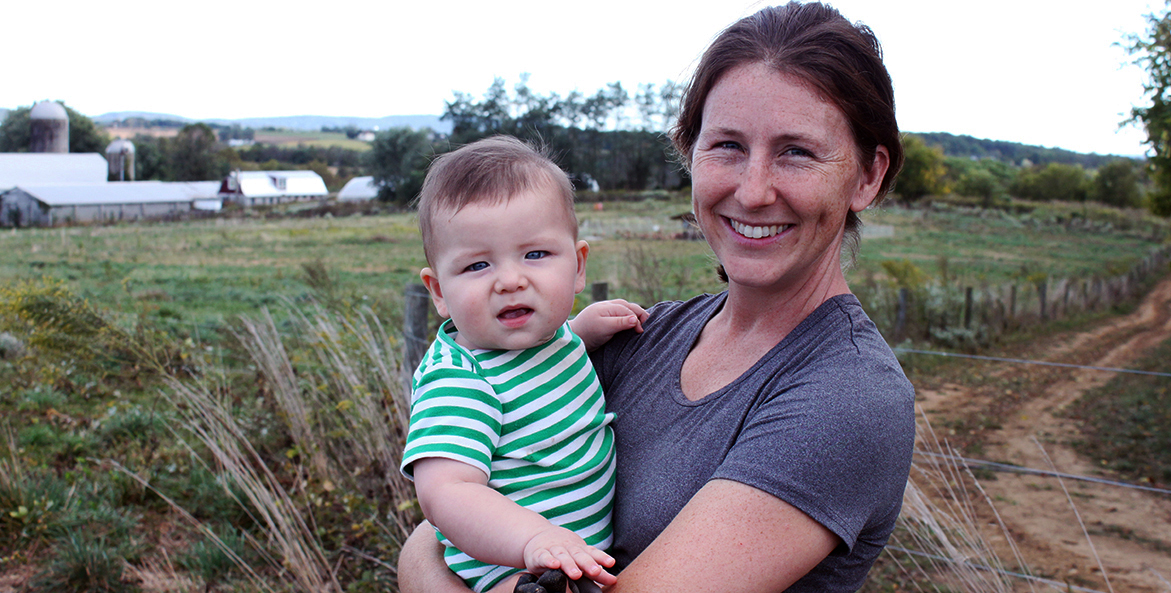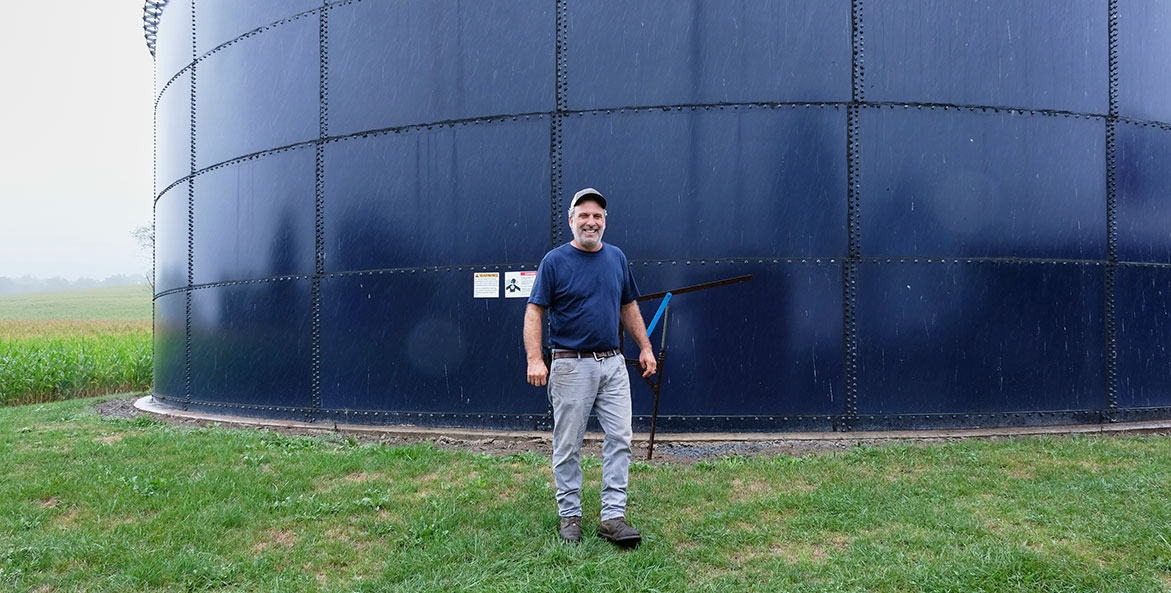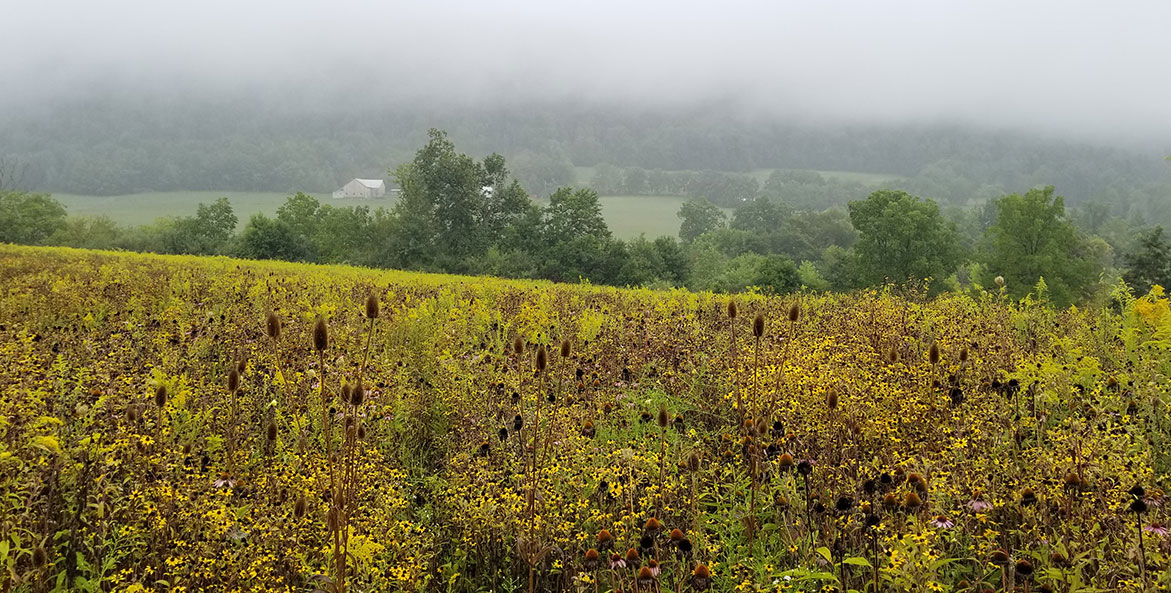Passed only once every five years, the federal Farm Bill is a package of legislation that has far-reaching impacts on the way food is grown, and the health of our communities and our waterways.
The U.S. Department of Agriculture (USDA) works with farmers to plan and install voluntary conservation practices that protect water quality by reducing the flow of excess nutrients and sediment from agricultural lands into rivers and streams that feed into the Bay. Funding for these conservation programs are authorized through the Farm Bill, making it critical for Congress to pass a strong legislative package this year.
You don’t have to take our word for it. Farmers across the watershed have used the Farm Bill conservation programs to convert to more environmentally friendly practices, bringing them healthier soil and increasing their bottom lines. They have first-hand experience with the importance of a strong Farm Bill and are speaking up in support. Just take a look below.

MK Barnet and son at Open Book Farm in Frederick County, Maryland.
Codi Yeager/CBF Staff
Open Book Farm in Middletown, Maryland
Owned and operated by MK and Andrew Barnet, Open Book Farm was originally a conventional dairy operation with confined animals and roughly 133 acres grown in soybean, corn, and winter wheat. The Barnets have leveraged both the Environmental Quality Incentives Program (EQIP) and the Regional Conservation Partnership Program (RCPP) to transition their land from cornfields to a diversified regenerative grazing and organic vegetable operation. In addition, they have utilized the Conservation Reserve Enhancement Program (CREP) to plant 8 acres of riparian forests buffer on their land.
In a conversation with MK Barnet, she shared that they were able to realize the dream they had for their farm and the land much more quickly with the help of federal cost-share programs and qualified, helpful technical assistance staff.
“Our farm would have looked totally different. It’s possible we would have done all of these changes, but they would have been on a smaller scale, and a much longer timeline. Establishing pasture is very expensive, and fencing was only affordable through these cost-share programs,” MK explained.
She also mentioned that timing was key, and by investing the money in their practices up front, they had to time their projects with their farms’ cashflow.
Holsinger Homeplace Farms in Broadway, Virginia
Holsinger Homeplace Farms, purchased in 1772, has been in the family of Buck Holsinger for 10 generations. Buck started working on the farm, located in the heart of Virginia’s Shenandoah Valley, in the 1980s and ’90s with his brother, cousins, and grandfather. After returning from his first deployment in Afghanistan, where Buck read the book Grass Fed Beef, he decided to take the leap and transition their farm to rotational grazing.
Buck connected with his local National Resources Conservation Service (NRCS) office, which is a part of USDA, and established his first project in 2009, building infrastructure to transition seven acres to rotational grazing through CREP to support a herd of seven calf-cow pairs. The rest was history, and through leveraging other cost-share funding, including EQIP and CSP, Buck has added 3.7 acres of riparian buffers, pollinator habitats, 40 acres of silvopasture (incorporating trees into grazed pasture), and expanded his rotational grazing to 57 acres supporting 35 head of cattle.
“We have been blessed with our government partners in the Rockingham County NRCS office. Without these federal programs the farm would not be at the place that it is today,” Buck explained. “We worked off the farm non-stop and the funding from federal programs became a catalyst to evolve our practices to where they are and what works for us on our property today.”
Buck said that the projects he’s installed provide multiple benefits, including natural shade for his herd, wildlife habitat, natural windbreaks, and micro-climates on his property that allow grasses to grow later into the hot summers.

Mike Marquardt at Muddy Creek Farm in Centre County, Pennsylvania.
Kelly O'Neill/CBF Staff
Muddy Creek Farm in Centre County, Pennsylvania
Mike Marquardt established Muddy Creek Farm in 2017 where he farms cropland for corn, soybeans, and wheat and raises beef cattle, which is sold by the half and the quarter to the local community.
Mike leveraged multiple cost-share programs, including RCPP, EQIP, CREP, and the Conservation Stewardship Program (CSP) to transition his 305-acre farm to where it is today. Through these programs, Mike has transitioned to no till, added manure storage infrastructure, utilized precision fertilizer application and cover crops, and installed 16 acres of pollinator plots as well as 28 acres of riparian forest buffer in close proximity to Muddy Creek. Through installing these practices, Mike has reported more earthworms in his soil, better yields during his harvests, and elimination of runoff from his barnyard area.
“There is only so much soil in the world. And if you don’t take care of it, it’s gone,” Mike says. “Hopefully these practices are not only impacting water quality but impacting the land. Farmers need to get more involved with these programs because they are doing good.”




